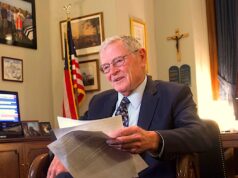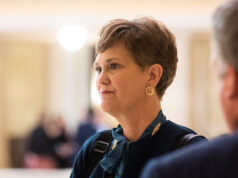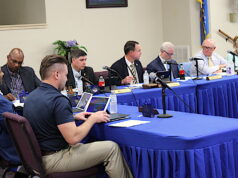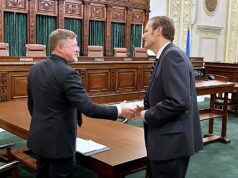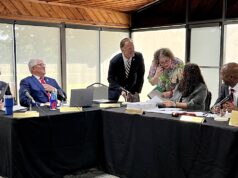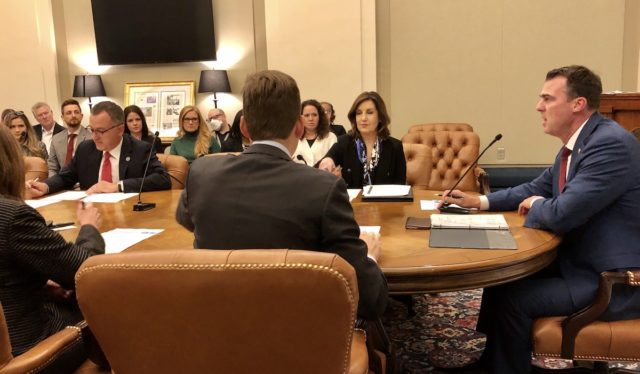
Following the conclusion of today’s Oklahoma Board of Equalization meeting, Senate Appropriations and Budget Chairman Roger Thompson spoke candidly with Gov. Kevin Stitt about the rosy fiscal picture that state budget leaders had just outlined.
“Now is not the time to go wild,” Thompson (R-Okemah) recalled of his advice to Stitt. “We don’t need to be cutting our income that is coming into the state. We’ve got a 6 percent inflationary rate. I do think we need to maybe look at some state employee raises going in this year to help them along.”
Six weeks ahead of the state’s 2022 legislative session, the Oklahoma Board of Equalization met the Monday after Christmas to approve a preliminary authorization of the Fiscal Year 2023 appropriation limit about $700 million higher than last year’s authorized amount, even as a pair of tax cuts are set to take effect Jan. 1. But the numbers are a little deceiving, with more than $1 billion in “carryover and special cash” from prior years inflating the Legislature’s authorized appropriation limit.
“They will say the appropriation authority is $10 billion. Keep in mind, a lot of that is one-time money in cash,” House Appropriations and Budget Chairman Kevin Wallace (R-Wellston) said after the meeting. “You can quote me on this or I will go down fighting: We will not appropriate our full authority again this session. We did not appropriate our full authority for two sessions in a row, and I fully believe we will not do it this year.”
Stitt told media members the same thing, praising Wallace and Thompson as “very disciplined” in looking long term.
“It’s very important to realize that, had we spent everything we could have appropriated last year, we would be looking at a $1 billion cut this year,” Stitt said. “It’s kind of like this one-time cash that keeps flowing through, if we spend all of that, then next year (…) we are going to be looking at what we are going to cut.”
Stitt said that, following acrimonious budget negotiations during the 2020 session, legislative leaders and his office have “kind of changed the perception” of the state’s budgeting process from year to year.
“Normally, before I got here, it was always budget year to budget year with crisis when we would go with these ups and downs. We now have the largest savings account in our state’s history,” Stitt said. “I want to caution the Legislature, if we appropriate more than the recurring revenue, we are putting ourselves in a bad situation next year.”
Thompson said his colleagues and the public should expect negotiations to begin “close to a flat budget.”
“The numbers are coming in high, and I’m not surprised about the numbers. Back whenever they recommended at the beginning of the pandemic to cut $1.3 billion, I argued with them at that time,” Thompson said. “I thought that was a big cut. That is one of the reasons we are running hot today. However, with a 6 percent inflationary rate and a lot of federal money coming in, I think we need to be as close to a flat budget as we can this year.”
Thompson emphasized his opposition to additional tax cuts in 2022. However, he and many other senators were initially opposed to the House’s tax cut ideas at the start of the 2021 session as well. (With Thompson’s support, the Legislature eventually reduced the percentages for both the individual income tax and the corporate income tax rates.)
“I am not for another round of income tax or corporate tax cuts right now. I think we need to hold our own this year,” Thompson said. “We don’t need to be moving forwa
rd in those tax cuts. I think we need to stay right where we are. I think we need to have more savings.”
‘Cash in our front pocket’
Asking legislative appropriation chairmen to analyze the state’s various savings accounts can be like asking an NFL quarterback to describe how they read pass coverages: The explanations are complicated.
The state of Oklahoma has a formula-driven Constitutional Reserve Fund — colloquially called the Rainy Day Fund — with parameters that can only be modified by a vote of the people. It features a cap on deposits and stringent limitations on when and how the money can be used.
“There’s only three ways to access it, and they’re all bad,” Wallace said, adding that proposals to raise the deposit cap are “prudent.”
The state also has a Revenue Stabilization Fund, which features statutory formulas intended to smooth the overall impact of corporate income tax fluctuations and year-to-year changes in gross production tax receipts from oil and gas drilling.
Lawmakers have also created the FMAP Rates Preservation Fund, which saw a $164 million deposit in 2021. The money is directed for use by the Oklahoma Health Care Authority to reduce the impact on Medicaid reimbursement rates when the state’s FMAP — Federal Medical Assistance Percentage — decreases. FMAP is calculated annually based on revenue and poverty figures across all 50 states. Oklahoma, Wallace noted, is often “counter-cyclical” owing to the petroleum industry and other factors, and the FMAP Rates Preservation Fund is intended to protect the state from decreases in federal health care funding.
But the main difference between the Board of Equalization’s numbers now and five years ago lies in the “carryover and special cash” funds that are artificially inflating the traditional spreadsheets.
Asked if that $1.1 billion could be described as cash in the state’s proverbial pockets, Wallace said “absolutely.”
“That’s the big portion of it. Whenever the governor asked where that cash came from (during Monday’s meeting), that biggest number of cash we are carrying right now based on the balance sheet is cash in our front pocket,” Wallace said. “It’s leftover from FY 21. And they haven’t certified FY 22 yet, but there’s going to be a portion there in (FY) 22 that gets certified when we close out (FY) 22.”
Lawmakers could direct more of that money into designated savings accounts, but Wallace cautioned against tying the hands of future Legislatures.
“I think it’s where it needs to be, where it can be utilized if needed by the Legislature,” Wallace said. “Having cash leftover is a sound policy that I hope future Legislatures will continue to use.”
Thompson said the state budget needs to be able to survive a “stress test,” and that means increasing state savings accounts further.
“What does it really take to make sure Oklahoma is taken care of?” Thompson asked. “We are a state that has mountain tops and valleys, and right now we are on a mountain top. Valleys are coming back. My job is to help us prepare for those valleys.”
Stitt team crafting proposed executive budget
Lawmakers’ jobs will start again in full with the start of the 2022 regular session on Monday, Feb. 6. The day will open with a State of the State address from Stitt, who will present lawmakers with his proposed “executive budget,” which signals the governor’s priorities and preferences, although the Legislature has the power of the purse.
“We’re working on it as a team,” Stitt said of his proposed budget. “We’re going to save part of [our surplus]. If we are going to spend that, it needs to be on one-time items.”
Stitt noted health care, education, infrastructure and the economy as the basic pillars of the state budget, and he emphasized his desire to make Oklahoma a “Top 10 place to do business.”
“[My proposal] will be closer to that flat budget,” Stitt said. “I’m not going to go over recurring revenue.”
The Board of Equalization will meet again in February to make the final authorization of appropriation authority for the 2022 legislative session. Between today’s meeting and the one in February, the board can only adjust its appropriation authority estimate based on changes in economic conditions.











